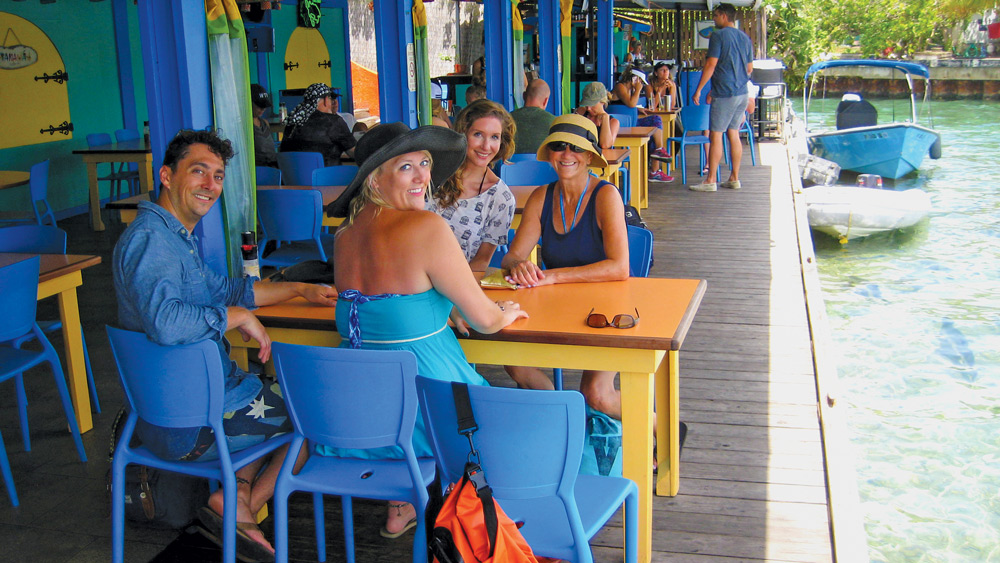Cruising back in time
Solitude and untouched beauty in the Spanish Virgin Islands off Puerto Rico’s east coast make this charter feel like old time Caribbean
As the anchor chain rattled downward, a bomb exploded in the distance, sending up a plume of black smoke. It was a loud boom. Julie captured the event on her iPad. It was a reminder that the military is still cleaning up the island where numerous no-trespassing signs bearing the words peligro explosivo are posted in certain areas.
The U.S. Navy used Vieques for bombing practice starting in 1941 when America entered World War II. Civil protests brought the military activity to an end in 2003. The eastern end of the island was used for live training exercises, ship-to-shore gunfire, air-to-ground bombing and U.S. Marine amphibious landings. The 900-acre Live Impact Area is still off limits and was used for targeting live ordinance and was located on the eastern tip of the island away from the civilian population.

La Chiva was a gorgeous anchorage where we swam and snorkeled. And like most other parts of the SVI, it was free from light pollution, so our stargazing reached a new level of appreciation. At night the only sounds were the waves lapping ashore and a cacophony of crickets.
With a steady easterly breeze blowing, our next stop was a 90-minute downwind sail to the village of Esperanza, which, as it turned out, was quainter and far smaller than we imagined. Shortly after we grabbed one of the few moorings, a middle-aged man named Chase arrived in his inflatable, introduced himself as The Boat Doctor and collected $25 cash. The fee guaranteed he would watch over our boat as we went ashore. Chase wore a gold police shield on his belt. We were advised beforehand to pay him rather than cause a stir. Chase emphasized we should tie our dinghy to the left side of the wood pier or risk having it removed and never returned.
Esperanza’s downtown was an unpaved strip named Calle Flamboyan. A row of cozy bars, restaurants and small hotels faced the beach with its decorative seawall. We gravitated to Duffy’s, a popular establishment with outdoor seating, shaded interior and helpful bartenders. Duffy’s also served as a central pickup zone for taxis headed to the bioluminescent bay, kayaking tours or horseback riding.
As evening approached, a truck from Taino Aqua Adventures took us to the staging area for kayaking on what is, according to the Guinness Book of World Records, the earth’s brightest bioluminescent bay. We boarded two-person kayaks with glass bottoms and paddled out onto the dark shallow water of Mosquito Bay. Our guide explained the best times to view the magic are when the moon is in its new phase. As she put it, “the darker, the better.”

So why does the bay glow in the dark? In simplified terms, millions of energized organisms called dinoflagellates produce bright bursts of blue light. Their presence caused our kayak paddles to create “white flames” as they were pulled through the water. Making a fist and quickly opening our hands beneath the surface achieved a similar effect. We weren’t the only ones having fun. Fish swimming just beneath the surface left glowing trails in their wakes. Through the kayak’s glass bottom, the water looked like a solar system of twinkling stars. It was truly magical.
On our second day in Esperanza, again following Capt. Miro’s suggestion, we booked a two-hour adventure with Colon Horseback Riding. If we had any doubts about whether the horses would actually swim in the ocean with us on their backs, they were soon dispelled. At several points, waves splashed across our saddles as the horses swam in the deepest spots. Two dogs and a colt accompanied us along the route, the young horse staying close to its mother. It was exhilarating.

Comments